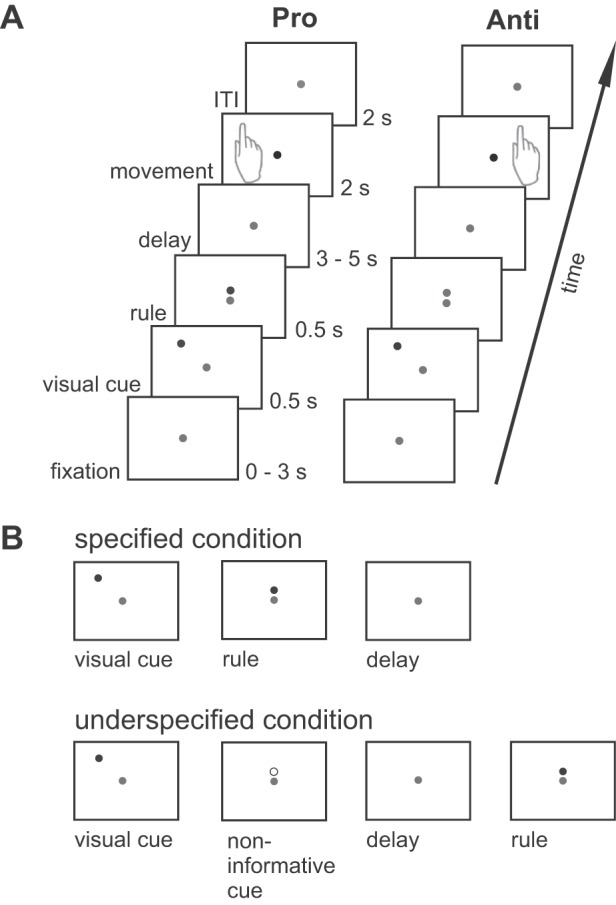Fig. 1.

Delayed pro-/anti-reach task with different precueing conditions. A: different context rules had to be applied to visual cues at four possible locations to infer the movement goal. The example shows a single-reach trial with only one visual cue indicated by a green light-emitting diode (LED) (here depicted as a dark gray circle). In double-reach trials, two visual cues were presented consecutively indicating the order of the reach sequence. A red fixation LED (here in light gray) was visible at the center of the screen throughout the whole trial, and a change of its brightness served as a go-cue (black circle). In condition Pro, the context rule was indicated by a green LED (here dark gray) above the fixation LED, and memory-guided reaches were performed toward the position of the previously presented visual cue after a variable memory delay. In condition Anti, the context rule was indicated by a red LED (depicted in light gray) above the fixation LED, and reaches were performed to the mirror-imaged position of the visual cue. B: different precueing conditions were introduced to vary the information available during the memory delay. In specified conditions Pro and Anti, both the visual cues and the context rule were available during the delay. In the underspecified condition, only the visual cues were available during the memory delay, whereas the context rule was given immediately after the delay prompting participants to start the respective reaching movement. An additional yellow cue (depicted as an open circle) was presented before the delay to keep visual input constant but contained no information about the task.
